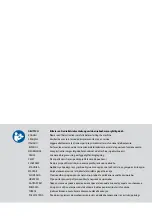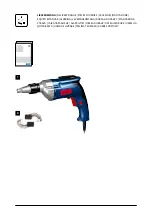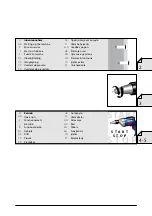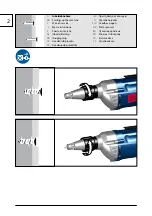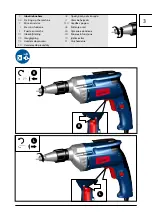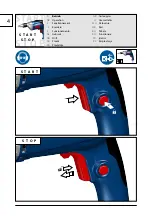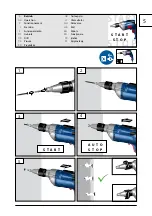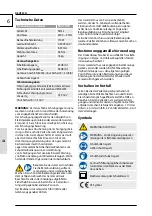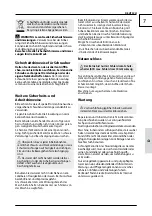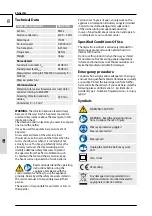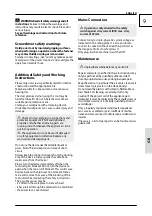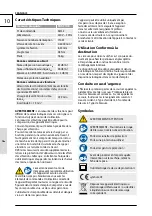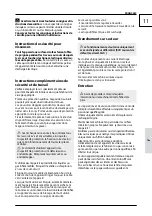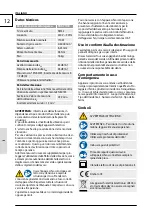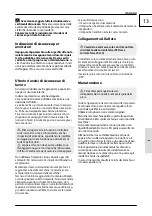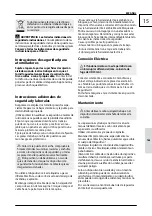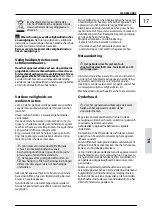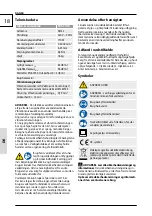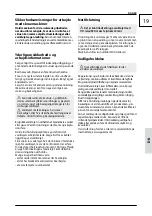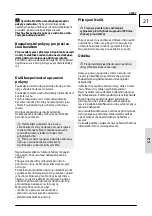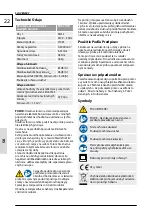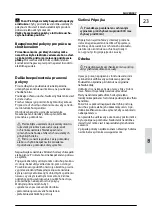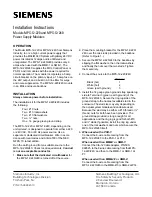
D
8
D
DGB
ENGLISH
Persons over 16 years of age can only work on the
appliance. An exception includes youngsters trained
in order to reach knowledge under supervision
of the trainer during occupational education.
In case of any doubts about connection and operati-
on refer please to our customer center
Specified Conditions Of Use
The drywall screwdriver is exclusively intended for
fastening gypsum and wooden plasterboards in
interior construction.
Do not use this product in any other way as stated
for normal use. Not observing general regulations
in force and instructions from this manual does not
make the manufacturer liable for damages.
Emergency procedure
Conduct a first-aid procedure adequate to the injury
and summon qualified medical attendance as quickly
as possible. Protect the injured person from further
harm and calm them down. If you seek help, state the
following pieces of information: 1. Accident site, 2.
Accident type, 3. Number of injured persons, 4. Injury
type(s)
Symbols
WARNING/CAUTION!
WARNING - Read the operating instruc-
tions to reduce the risk of injury.
Wear eye protective goggles !
Wear ear protectors!
Wear gloves!
Unplug the machine before any work
on it.
Class II tool.
CE marking
Any damaged or disposed electric or
electronic devices must be delivered to
appropriate collection centres.
Technical Data
Drywall screwdriver
TBS 710 E
Art. No
58132
Service connection
230 V ~ 50 Hz
Rated input
710 W
No-load speed
0-4000 min
-1
Tool reception
6,35 mm
Torque max.
9,8 Nm
Weight
1,6 kg
Noise details
Sound pressure level L
pA
85 dB (A)
Sound power level L
WA
96 dB (A)
Measured according to EN 60745; Uncertainty K =
3 dB (A)
Wear ear protectors!
Vibration details
Vibration total values (triaxial vector sum) deter-
mined according to EN 60745
Screwing: Vibration emission
value a
h
0,79 m/s
2
Uncertainty K = 1,5 m/s
2
WARNING: The vibration emission level will vary
because of the ways in which a power tool can be
used and may increase above the level given in this
information sheet.
The vibration emission level may be used to compare
one tool with another.
It may be used for a preliminary assessment of
exposure.
An accurate estimate of the vibratory load
should also take into account the times when the
tool is shut down or when it is running but not
actually in use. This may significantly reduce the
vibratory load over the total working period.
Identify additional safety measures to protect
the operator from the effects of vibration such
as: maintain the tool and the accessories, keep
the hands warm, organisation of work patterns.
Read and understand the operating
instructions before using the
appliance. Familiarise with the
control elements and how to use the appliance
properly. Abide by all the safety measures stated in
the service manual. Act responsibly toward third
parties.
The operator is responsible for accidents or risks to
third parties.


